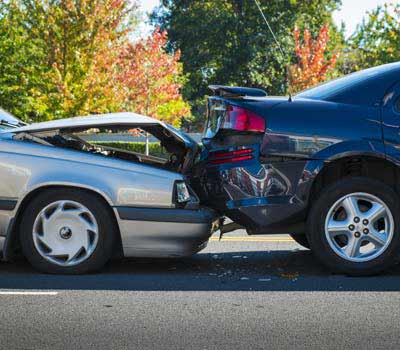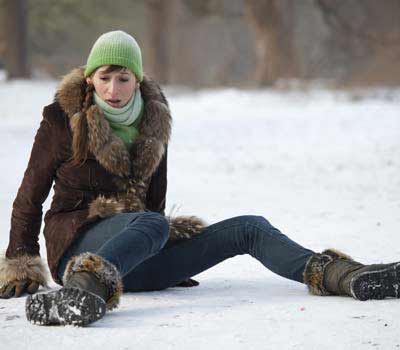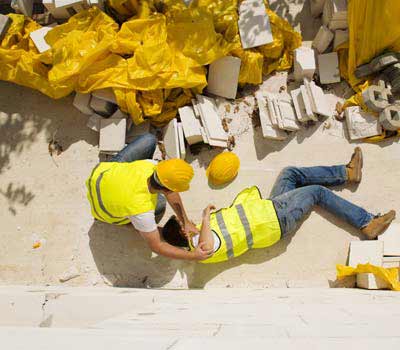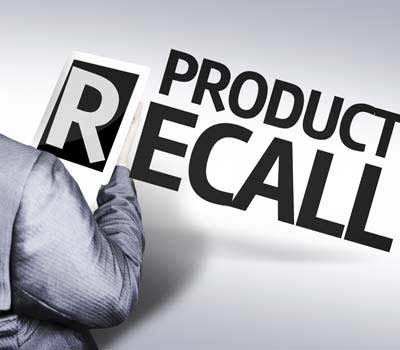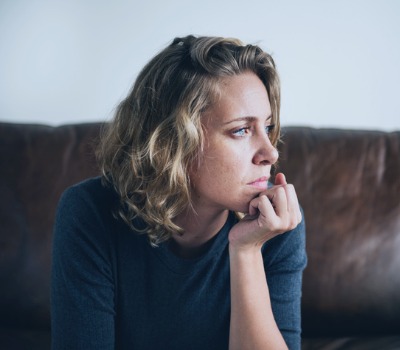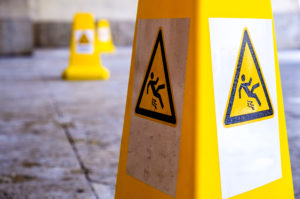 New York’s elderly population isn’t the only group suffering from fall-related injuries. Falls can occur, anytime, anywhere, and contrary to popular belief (“That person’s just clumsy!”), they’re often the result of someone else’s negligence.
New York’s elderly population isn’t the only group suffering from fall-related injuries. Falls can occur, anytime, anywhere, and contrary to popular belief (“That person’s just clumsy!”), they’re often the result of someone else’s negligence.
For example, business owners can cause slip-and-fall injuries if they fail to maintain a safe environment for customers. Property owners can be held liable for any injuries that occur due to their failure to maintain safe flooring or neglecting to fix a broken part of the house or apartment.
People who choose to buy or own a property or business need to keep that property or business safe for guests. If you or a loved one fell and were injured on someone else’s property, you may have a valid slip-and-fall claim.
Keep reading to learn more about these claims in New York, and contact Carner & DeVita when you’re ready to get started on your case.
What is a slip and fall claim?
Slip-and-fall cases fall under the legal concept of premises liability. Premises liability is a concept often used in personal injury cases when someone is injured due to an unsafe condition on someone else’s property.
New York law requires that property owners use “reasonable care” to maintain safe conditions on their property. To quote the law, a property owner must “use reasonable care to keep the premises in a reasonably safe condition for the protection of all persons whose presence is reasonably foreseeable.”
Here, the law defines “reasonable care” as what a person of ordinary intelligence and judgment would find appropriate in the circumstances. This is where things can get tricky in a New York slip-and-fall claim. Juries may have differing interpretations of what is “reasonable” in a given situation.
That’s why it’s imperative that you hire a knowledgeable, experienced Commack slip-and-fall lawyer who will represent you and work toward winning you the compensation you deserve.
In the past, property and landowners owed varying degrees of care to different groups of people who entered or came onto the property: invitees, licensees, and trespassers. Invitees were owed the highest duty of care, as they were considered “guests” of the property or business owner. Customers or job applicants are examples of invitees, and property owners were required to keep their property reasonably safe for them.
Licensees were the next category of visitors in former New York law. These individuals had the property owner’s permission to be on the property but were entering onto the property for their own purposes. A salesperson is an example of a licensee. The land or property owner was only required to notify a licensee of a dangerous condition that created an unreasonable risk of harm if the property owner knew about the condition and if the licensee was not likely to discover it.
Trespassers were the last group traditionally included in New York premises liability law. Land or property owners did not owe a duty of care to a trespasser unless they were a child.
New York no longer imposes the three-tiered premises liability scale. Instead, the state applies a single standard of care to all persons who may enter the property. This doesn’t mean that a trespassing person will not receive a penalty; in fact, trespassers may receive a fine and a jail sentence. The law just means that property owners must exercise a reasonable duty of care to all potential visitors on their property.
How does a slip-and-fall claim work?
You and your Commack slip-and-fall lawyer will notify the defendant (the property owner) of the building where the fall occurred. You and your attorney should file a claim with the defendant’s insurance company as soon as possible and can write a letter notifying them of the claim.
To file a lawsuit, you and your lawyer would draft a summons and complaint, pay the filing fee (Carner & DeVita will advance such fees for you), and submit the document to the appropriate court within the deadline, or statute of limitations. In New York, you must file a lawsuit within three years of the date of the accident.
If you fail to meet this deadline and try to file after three years have passed, your case will likely be thrown out.
Contact a Commack Commack Slip-and-Fall Lawyer Today
Slip-and-falls should not be taken lightly. These events can cause serious and even life-threatening injuries, especially if the fall took place on concrete or another unyielding surface.
It’s unacceptable for land and property owners to neglect visitors’ safety and well-being. If you slipped, fell, and were injured, a Commack slip-and-fall lawyer must prove that the owner knew of the danger and did nothing to prevent or notify you. If this can be proven, you can receive compensation for your injuries.
Nothing can take back the harm done to you through someone else’s negligence or recklessness, but an attorney from Carner & DeVita can help you move forward and get you the money and treatment you need to recover. If you or a family member were injured in a slip-and-fall, call Carner & DeVita today for a free, no-obligation case consultation. Call (631) 543-7070 now.
Important Things to Know About Your Slip-and-Fall Case
What qualifies as a slip-and-fall lawsuit?
To qualify for a slip-and-fall lawsuit, you must have slipped or tripped on someone else’s property where the owner was negligent in dealing with the condition. A slip-and-fall can occur anytime, anywhere, but these are some of the most common conditions:
- Accumulation of ice or snow
- Defective staircases
- Hidden extension cords
- Loose or broken flooring, tiles, sidewalks, steps, and stairs.
- Unsecured rugs, carpets, or floor coverings
- Wet, oily, or slippery floors
Keep in mind that not every slip-and-fall accident is actionable. There are specific elements that must be met to qualify for a slip-and-fall lawsuit. If you have questions about your potential case or are curious about your options, contact a Commack slip-and-fall lawyer at Carner & DeVita today.
Proving Negligence in a Slip and Fall Case
Every slip-and-fall case is unique, but they all come back to these two factors. One, whether or not the property owner acted using “reasonable care” so that slipping would be unlikely, and two, whether or not the injured person was careless in not seeing or avoiding the object or condition that caused their fall.
You and your attorney will have to prove that the owner of the property was negligent in handling the condition that caused your injury. That is, they knew or should have known about the condition but failed to fix, clean, rope off, or otherwise make safe that area of the property.
A “dangerous condition” is one that presents an “unreasonable risk” to visitors on the property, and it must be a condition which the injured party would not have anticipated under the circumstances. This prevents people from filing lawsuits when they should have been aware of and avoided an obvious danger.
So, the next order of business is to prove that the land or property owner knew of the dangerous condition. To prove this, you and your Commack slip-and-fall lawyer will establish:
- The owner created the condition (they were watering plants and placed the hose in an inconspicuous location under a mat that was on the walkway).
- The owner knew the dangerous condition existed and negligently failed to correct it (they noticed that the hose was still under the mat when they finished watering, but forgot to move it).
- The condition existed for a length of time in which the owner should have discovered and corrected it (days go by and they search for the hose, can’t find it, and just buy another one).
It’s important to remember that for the owner to be held liable, it must be clearly foreseeable that their negligence (not moving the hose) would create the dangerous condition.
There are also a few complications based on the type of property where the slip-and-fall occurred – namely, whether it occurred on a commercial or residential property.
Slip-and-Fall on a Commercial Property
“Commercial property” refers to a restaurant, bar, store, or other places of business. To be held legally responsible for someone’s slip-and-fall on their property, the owner must have:
- Caused the dangerous surface or item to be on or in the walkway (underfoot).
- Known or should have about the dangerous surface or item but did nothing to remedy the condition.
“Should have known” is where things can get complicated, but it’s usually fairly simple to establish common sense from a business owner’s perspective. For example, a business owner would have the common sense to put a “wet floor” sign over a spill.
In commercial property slip-and-fall cases, more than one person may be liable. Your Commack slip-and-fall lawyer will hold all responsible parties accountable for their actions and get you the compensation you need.
Slip-and-Fall on a Residential Property
To hold the landlord or owner of a residential property, the injured party and their attorney must prove the following:
- The landlord had control (could have done something) over the condition or disrepair that caused the fall.
- Repairing the condition or disrepair would not be unreasonably costly or difficult.
- Injury was a foreseeable consequence of their failure to fix the condition.
- The landlord’s inaction or failure to take reasonable steps to fix the condition directly caused the injured person to slip and fall.
Whether you or your loved one were injured on a commercial or residential property, a Commack slip-and-fall lawyer from Carner & DeVita will work relentlessly to hold the responsible party liable for your injuries. We’ve helped injured victims for over 60 years; you can trust us to help you too.
Common Injuries in a Slip-and-Fall Accident
Some slip-and-fall injuries are minor, but too many others are life-threatening. Head and brain injuries are the most serious and can have the most lasting damage. The human brain is extremely delicate, so when a person slips, falls, and hits their head on a hard surface, serious complications can arise.
The following are some of the most common injuries related to slip-and-fall accidents:
Broken Bones
A bone fractures (breaks) when more pressure is put on the bone than it can stand. Hip, wrist, and ankle fractures are common in slip-and-fall accidents. Broken bones may not seem so serious, but there is a heightened risk of infection, and if the infection spreads to the bloodstream, a deadly condition called sepsis may occur.
Soft Tissue Injuries
A soft tissue injury involves the tendons, ligaments, or muscles. When a person falls and a limb or other part of their body moves at an unusual angle, the stress can cause the tendons, ligaments, or muscles to tear, rip, or stretch.
There are several different types of soft tissue injuries common to slip-and-fall accidents These include sprains, strains, tendonitis, and bursitis.
Traumatic Brain Injuries (TBIs)
Unfortunately, TBIs are one of the most common injuries sustained in a slip-and-fall accident. A TBI is caused by a violent blow or jolt to the head, such as when a person slips, falls, and strikes the ground.
The force of impact, coupled with the hardness of the surface that they hit, can cause the brain to slam against the skull. This is known as a closed head injury. If the person lands on an object, the object could pierce the skull and enter the brain. This is what’s called an open head injury. Both are extremely serious, and both can cause lifelong complications, including mood swings, memory changes, depression, and anxiety.
Symptoms that may appear shortly after the fall include dizziness, confusion, disorientation, nausea, vomiting, and blurred vision.
Spinal Cord Injuries
A slip-and-fall accident can result in damage to the spinal cord, the bundle of nerve tissue that functions as a pathway for messages between your brain and your body. Slip-and-falls can result in an incomplete or complete injury of the spinal cord.
Even an incomplete injury can cause severe damage to how the brain communicates with the body, disrupting many different bodily functions. An incomplete spinal cord injury could result in loss of feeling or function below the point of injury, while a complete spinal cord injury could result in paralysis below the point of injury.
Learn How We'll Treat You As a Priority.

